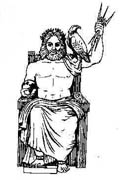 GENEALOGY: The Royal Line of Zodiac Lords
GENEALOGY: The Royal Line of Zodiac Lords
THE PLANETS: MINISTERS OF THE ZODIAC
In Hellenistic times when the zodiac became commonly used for horoscopes, the planets weren't considered to be rulers of zodiac signs. Recent translations of ancient texts have shown that the planets were viewed more as ministers or chief operations officers of signs. As Joseph Crane points out in A Practical Guide to Traditional Astrology (Arhat 1997), the unchanging zodiac had greater authority than the moving planets, which acted as stewards for the signs. So if you wanted to know about Aries, you had to look at Mars. If you wanted to know about Virgo, you studied Mercury in the horoscope.
The planets’ names that are familiar to us are of Latin origin, but each Roman god had a Greek counterpart. As a matter of fact, most Roman gods were simply abstract powers until names and personalities were adopted from the Greeks. Only then did the Roman gods become persons in their own right that the people could love, admire, fear or hate. Our astrological deities are Greek gods with Roman names.
 GENEALOGY: The Royal Line of Zodiac Lords
GENEALOGY: The Royal Line of Zodiac Lords
The diagram below illustrates the genealogy of the gods who were given dwelling places in the zodiac. The genealogical line passes from the sky god, Uranus through Saturn to his sons, including Jupiter, and on to Jupiter's male children. The only female whose name has been given to a zodiacal planet is Venus. Though Venus was sometimes considered to be the daughter of Zeus (Jupiter) and Dione, she was usually said to have been born from sea foam directly from the mutilated Uranus.
In the planetary genealogical line Zeus/Jupiter is the central figure; the zodiacal gods include his grandfather, Uranus, his father, Saturn, his brothers Neptune and Pluto, and two of his male children—Mars and Mercury. The names of Jupiter's sisters—Vesta, Juno and Ceres—have been given to asteroids. The same is true of Jupiter's daughters.
Mercury, Mars, Venus, Jupiter and Saturn have had their homes in the zodiac since Hellenistic times. Contemporary astronomers have named the newly discovered planets Uranus, Neptune and Pluto for the royal Olympic line rather than for the lesser gods. If any planets discovered in the future are also assigned to Jupiter's hereditary line, there is little guess work involved in choosing the probable zodiacal rulers of Taurus and Gemini, the two signs still without their primary domicile lords.
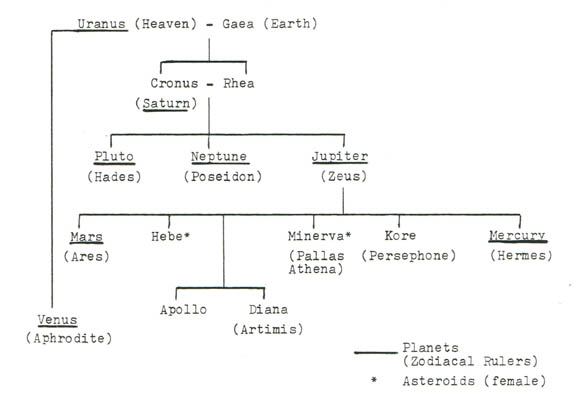 Looking at the diagram of planetary genealogy, it's apparent that
of Jupiter's children who are numbered among the principle Olympian gods only
Apollo, his twin sister Diana and Kore/Persephone have not been assigned to a
planet or one of the major asteroids. Perhaps in response to the continued rise
of feminine consciousness in the world, a newly discovered planet might be
named for one of Jupiter's daughters.
Looking at the diagram of planetary genealogy, it's apparent that
of Jupiter's children who are numbered among the principle Olympian gods only
Apollo, his twin sister Diana and Kore/Persephone have not been assigned to a
planet or one of the major asteroids. Perhaps in response to the continued rise
of feminine consciousness in the world, a newly discovered planet might be
named for one of Jupiter's daughters.
It's intriguing that Gemini, the sign of the twins, is still without its own ruler, and that no planet has been named for Apollo (or Diana). It's an interesting contemporary connection that the wife of the future king of England was named Diana, and her Sun and Mercury were in sidereal Gemini. It's equally intriguing that Apollo was the name given to early U.S. space missions, which could well be placed under the sign of Gemini. In India the symbol for Gemini is a man and a woman.
SOLAR AND LUNAR HALVES OF THE ZODIAC
A primary key to the zodiac is the ancient division of signs into lunar and solar halves. This division has fallen by the wayside in modern times, but it is really very important in understanding how the zodiac as a whole operates. This solar-lunar division of the zodiac is known in both East and West, and is mentioned in several texts, among them India's Yavanajataka of Sphujidhvaja, (p. 3), Manilius’ Ancient astrology, Theory and Practice (p. 32-33), and in Claudius Ptolemy’s Tetrabiblos:
...they portioned out these two (Cancer and Leo) as houses to the greatest and most authoritative planets, that is, to the lights, with Leo going to the Sun since it is a masculine zõidion, and Cancer going to the Moon since it is feminine. And accordingly, they laid down that the semicircle from Leo up to Capricorn was solar, while the semicircle from Aquarius to Cancer was lunar, in order that in each of the semicircles one zõidion could be apportioned to each of the five planets appropriately, the one being figured in relation to the Sun, and the other in relation to the Moon... (Tetrabiblos, Book 1, p. 32, translated by Robert Schmidt, The Golden Hind Press, 1994)
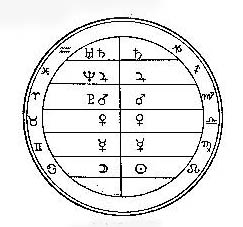 These two divisions were sometimes called
day and night halves of the zodiac. This division of the signs is the
foundation of the rulership scheme with which we're all familiar. Each of the
five planets was given two domiciles or homes, one each in a masculine and
feminine zodiac sign. Do the planets really relate to their domicile signs?
This is a question that we haven't adequately explored in the recent centuries.
Yet, I believe that the answer holds the key to the structure of the zodiac.
These two divisions were sometimes called
day and night halves of the zodiac. This division of the signs is the
foundation of the rulership scheme with which we're all familiar. Each of the
five planets was given two domiciles or homes, one each in a masculine and
feminine zodiac sign. Do the planets really relate to their domicile signs?
This is a question that we haven't adequately explored in the recent centuries.
Yet, I believe that the answer holds the key to the structure of the zodiac.
Before the discovery of the trans-Saturnian planets and the psychology of the individual, the needs of society as a whole were paramount. The ancient solar half of the zodiac—Leo through Capricorn— represented social roles and one's duty to society. (The Sun shines during the day when most of the work of society is done.) The lunar half of the zodiac (Aquarius through Cancer) may represent personal or individual growth without concern for the demands and obligations of society.
In assigning the planets to the signs, ancient priest-astrologers may have understood that each planet had both a personal (lunar) and communal (solar) function. As obligations to one's king and country were emphasized over personal interests in centuries past, the traditional planets were observed to operate best in their solar signs. Good planets in solar signs meant that lady fortune smiled on those who held the power of society in their hands. Usually these people were heads of state, the kings, queens and rulers of nations: as the horoscope of a country's ruler went, so went the fortunes of the country.
Before contemporary times the masses (represented by the Moon) were considered as a group with little or no attention being given to individual differences and personal needs. If a husband or father had to go to a faraway land to fight the king's war, no one questioned the order, even though his family may have never heard from him again.
The Moon signifies the personal world of home and family, and the workings of individual feelings, thoughts, and emotions. The Moon shines at night, the time for social gatherings and intimate relationships. Night is the time for parties and having a good time as well as the time when psychic exploration takes place in the guise of dreams, reveries, and meditation. Solar related activities emphasize work and service; lunar activities emphasize pleasure and relaxation.
In terms of planetary sign ministers, we can see an entirely consistent pattern: In former ages the solar half of the zodiac expressed the values of society. The planets expressed only imperfectly in their lunar or night signs. In line with the contemporary discovery of psychology and the needs of the individual, the newly discovered planets should be assigned to the lunar half of the zodiac. Astrologers have been consistent in assigning Uranus to Aquarius and Neptune to Pisces, but have broken the pattern with Pluto, assigning it to Scorpio rather than to Aries. This assignment is partly due to the observed nature of Tropical Scorpio. According to the exaltation diagram, sidereal astrologers have correctly assigned Pluto to Aries.
PLANETARY EXALTATIONS
Modern astrology has inherited a system of planetary exaltations from ancient writers which is similar to the rulership system. Each planet is said to be exalted in one of the astrological signs. Indian astrologers measure the strength of a planet in part by its distance from its exaltation degree and sign. The exaltations originally came from Mesopotamia where each planet was said to have a secret house, a general area within a constellation. In Hellenistic times the exaltations became attached to specific degrees of the zodiac.
Unlike the system of planetary lords, at first glance the relationship of exalted planets to signs does not seem to follow any astrological pattern. Planetary exaltations are important and widely used in India where the sidereal zodiac has never lost its popularity;
Various attempts have been made to assign exaltation signs to the newer planets—Uranus, Neptune and Pluto. In this article I’m suggesting a consistent pattern here that has a symmetry similar to the ancient domicile scheme.
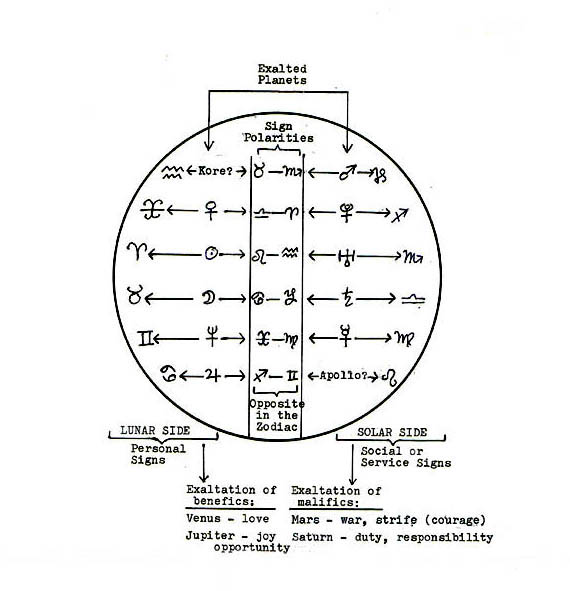
In this diagram the signs are placed around the circle with the lunar signs (Aquarius through Cancer) on one side and the solar signs (Leo through Capricorn) on the other. The exalted planet is placed next to each sign, and beside each exalted planet (in the center of the diagram) is that planet’s solar domicile (home). Note that the traditional benefics, Venus and Jupiter, are exalted on the lunar side of the chart whereas the traditional malefics—Mars and Saturn—find their exaltations in the solar half of the zodiac—duty.
Signs in the lunar half of the zodiac have been given to the newly discovered planets: Taurus and Gemini don't have their own domicile lords as yet, but their lords would be exalted in Aquarius and Leo respectively. These two signs had no exalted planets in the ancient system.
The exaltation pattern in the diagram links together by opposition the two signs ruled by each of the five traditional planets. All of the older planetary exaltations have been retained, and the newer planets are simply added in their proper places to fill out the pattern. If the zodiac signs are listed from Aries through Pisces, we find that with this exaltation pattern, the two signs associated with each of the traditional planets remain together:
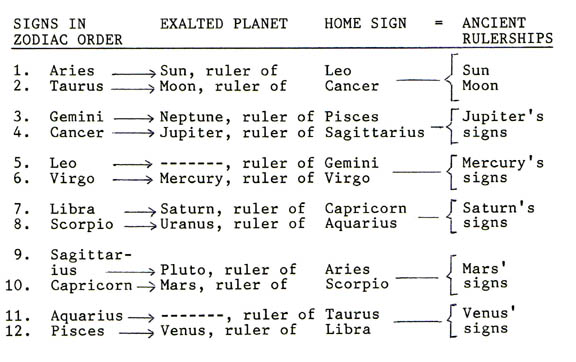
(The diagram has not been corrected from the original. The term ruler is used which we now know should be replaced with domicile lord.) It's a nice perfectly aligned scheme, but does it have anything to do with contemporary signs of the zodiac? Especially there seems to be a question about the assignment of Neptune to Gemini, Mercury's night sign. We'll see in the individual articles on the sidereal signs and example charts of people with stelliums in the signs whether these domiciles and exaltations seem to make sense.
A ZOROASTRIAN FRAGMENT
One of the most fascinating translation tidbits that has come out of Project Hindsight translations is a fragment derived from Gregory of Nicaea of an ancient Persian Zoroastrian assignment of co-inhabitants to the signs of the zodiac. If this fragment does indeed come from this ancient Persian group, it indicates that the ancient Zoroastrian priests apparently had a grasp of sidereal signs that could only be called contemporary.
And concerning zodiacal habitation, they say that it is divided into six domiciles in the following fashion: the domiciles of Kronos [Saturn] are Capricorn and Aquarius; of Zeus [Jupiter], Sagittarius and Pisces; of Ares [Mars], Scorpio and Aries; of Aphrodite [Venus], Libra and Taurus; of Hermes [Mercury], Virgo and Gemini; of the Sun, Leo and Cancer. The coinhabitants of these:
Leo: Apollo with the Sun
In the proposed exaltation scheme above Apollo, lord of Gemini, is exalted in Leo.
Virgo: Muse [who inspired poetry and the arts] with Hermes
Virgo expresses the artistic as well as verbal side of MercuryLibra: Anteros [brother of Eros, the god of love] with Aphrodite
Love is assigned to Libra (the exaltation of Saturn) whereas Desire is assigned to Taurus!
Scorpio: Ate [goddess of mischief and rash action] with Ares
Interesting that Ate is given to Scorpio but not to Aries!Sagittarius: Hera [the faithful wife] with Zeus
This is a very suitable assignment for a sign that has to do with the structure of society.
Capricorn: Rhea [mother of Zeus, his brothers and sisters] with Kronos
Now what is fascinating is the assignment of the coinhabitants of the remaining six zodiac signs:
Aquarius: Artemis [who lived remote from mankind on mountain tops and forests] with Kronos
Artemis is not Uranus, but she shares the planet's quality of remoteness and individuality.
Pisces: Posiedon [Neptune] with Zeus
Today's assigned rulership to Pisces!
Aries: Pluto with Ares
Pluto has been assigned to Aries by the western sidereal school.
Taurus: Imeros [god of desire] with Aphrodite
See the article on Taurus and the symbolism of the bull.
Gemini: Nephele [a phantom-like woman] with Hermes
Interesting in view of the alignment of Neptune with Gemini (above)
[There is no house of the Moon, but by sympathy, Leo and
Cancer being the houses of the Sun, the Moon is coinhabitant of Cancer]
(corrupt text restored by Robert Schmidt)
(CCAG 8, 3; 120-122: page 23
of The Astrological Record of the Early Sages in Greek, Project Hindsight,
Volume X)
Note that the day signs of the planets are always listed first before the night signs in this fragment, and this listing survived even up to the time of Johannes Schoener (c. 1500 CE) who listed Virgo through Capricorn as the principal houses of planets and Aquarius through Gemini as the planets secondary houses.
It's intriguing that this ancient Zoroastrian text assigns the remote Artemis to Aquarius, Neptune to Pisces, with which all modern astrologers agree, and Pluto to Aries, the suggested sidereal co-lord of Aries. Robert Schmidt (PHASEWATCH, 1997) has suggested that the coinhabitants of each sign may be meant to bring out how the planet behaves in its different domiciles, so that Aphrodite may be mutual love in Libra, but desire in Taurus. It's also possible that the coinhabitants describe the characteristics of the signs themselves.
As we'll see in the articles on individual signs of the zodiac, these and the other coinhabitants of the zodiac may give fascinating clues to characteristics of the signs, which we've noted only in the 20th century!
© 2004 East-West Publishing, Therese Hamilton
Return to Lost Zodiac Home Page